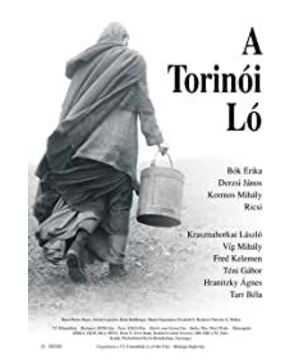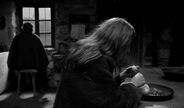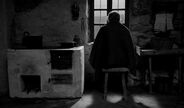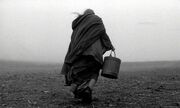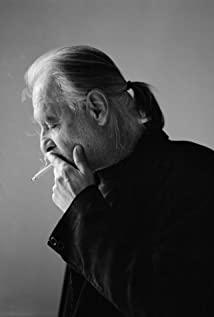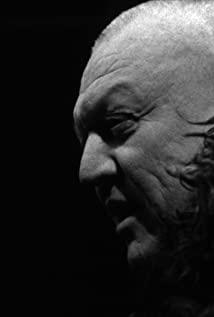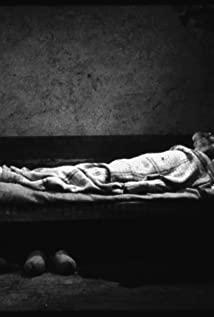To some people, film seems to be just a tool for expressing ideas. In "Genesis", God created the world in six days. For Bella Tarr, it only took six days for human beings to let the world fall into nothingness and death. The opposite narrative chronological sequence completes a "rebellion" against traditional religious ethics. , In his movie world, human beings cannot be redeemed, and God no longer exists, and the movie "Horse of Turin" itself has also become a challenge to believers' worldview.
The narration of the title explains the origin of the title and the inspiration for the creation of the film, and also hints that there is a hidden connection between the theme of the film and the values held by Nietzsche.
Since then, on the visual level, the film is dominated by a large number of moving long shots and fixed-camera empty shots, through the subtle changes of daily life that repeat like a routine in six days, and a number of sub-apocalyptic but intruded The outsider in the family space reveals the world and each individual's gradually collapsing and degenerate conceptual consciousness. On the auditory level, the film repeatedly uses the same string of minor arpeggios combined with long and short keys to render a desolate atmosphere and a sense of fate. The director likes to use the changes of the voiceover to complete the narrative with the main theme. The relationship between the breaking of the voice-over and the constant main melody in the auditory sense corresponds to the relationship between the visual interloper and the repeated life of the father, the daughter and the horse machine, making the film achieve "unchanged" and "unchangeable" in the two dimensions of vision and hearing. A clever balance of change". This makes the film's narrative unique, because the film is not limited to the visual picture space presented by the screen. In the time dimension, music and other sounds play an equally important narrative role. "Horse of Turin" successfully expresses the perpetual cycle of sharp ideology, self-destructive life concept and nihilism by means of stylized and extremely neat audio-visual language.
The narrative in the film is almost never advanced by dialogue, and largely relies on the inter-referential and relationship changes between the language of the camera and the concept of hearing, highlighting the symbols between the disabled father, the daughter, and the "horse of Turin". relation. On the first day, the disabled father accepted the service of his daughter. The director used a long shot to record in detail the process of the daughter taking off and changing clothes for the father. Because he lost his ability to take care of himself, his father's movements were greatly restricted. When he saw the horse standing still and couldn't move according to his own wishes, he felt very resentful, and he kept beating with the whip. The immobility of the father corresponds to the immobility of the horse, which is a metaphor for the body of the father. The father's resentful beating against the horse symbolizes a kind of resentment that his own body has lost freedom and cannot act, and it is also like a kind of spiritual beating of the self, implying a kind of ideological concept of self-abuse and self-destruction. The sound of this whipping corresponds to the sound of the father chopping wood. The director once again reinforces the correspondence between the horse and the father, and guides the audience to pay attention to the change of the father compared with the first day. When changing clothes, he changed from being motionless on the first day to taking off his clothes quickly on the second day, seemingly eager to prove his mobility. Immediately afterwards, his act of chopping wood to make a clothesline not only shared his daughter's household chores, but also reconfirmed his self-worth after experiencing "failure to ride a horse". The image of the "horse of Turin" in the father's mind is a projection of his inner self. The director establishes a metaphorical relationship between the father and the horse through the concept of language and hearing through the lens.
In addition to audio-visual language, "Horse of Turin" also relies on textual narratives other than the script, subtly intertextualizing with "Genesis" and Nietzsche's works and deeds. The most obvious is the six days in the Horse of Turin that contradict the biblical book of Genesis. "Genesis" said: "God said, if there is light, there will be light." And the end of "The Horse of Turin" is a dark night of "dead silence where only breathing can be heard". The darkness on the last day of Turin's Horse is in stark contrast to God's creation of light on the first day of the Bible. Furthermore, the well water drought on the fifth day of the Horse of Turin contrasts again with the second day in Genesis where God gathers the water together and separates the water from the dry area. If the "Bible" is an ancient fable about the birth of the world, then Bella Tarr's "The Horse of Turin" seems to be a fable of the future of mankind in the end of the world written from the perspective of Satan. "The Horse of Turin" is a The fierce response of the Bible is also a bold challenge and attempt full of avant-garde.
The excellent artistic expression of "The Horse of Turin" shows the richness of the film's narrative dimension. Bella Tarr danced with Satan, waving a flag that represented nothingness, and uttered her sharp voice fiercely with the melody of life's eternal self-destruction and depravity.
Interestingly, Bella Tal is very similar to Lao Tah. For them, film art is a way of expressing their own philosophical, religious and world views; however, there is a whole universe between them. There is something that can never be reconciled.
View more about The Turin Horse reviews


